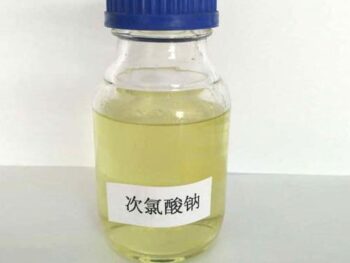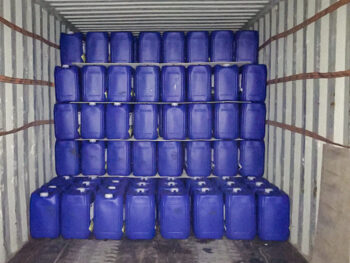Disinfectants play a crucial role in water treatment by inactivating harmful microorganisms to ensure safe drinking water. Common disinfectants used include chlorine gas, sodium hypochlorite, calcium hypochlorite, chloramines, chlorine dioxide, ozone, and UV light. Chlorine is widely applied due to its effectiveness, though chlorine dioxide, ozone and UV are also effective against resistant microbes. Chloramines provide residual disinfection in distribution. Water quality, pH, contact time, residual levels, and disinfection byproduct formation must be considered when selecting a disinfectant. Cost and maintenance requirements also factor into the decision. Proper disinfection is essential for destroying waterborne pathogens and protecting public health through production of microbiologically safe drinking water.
-
Sodium Hypochlorite
Sodium hypochlorite is an inorganic compound with the chemical formula NaClO. It is a white or light yellow solid with a strong chlorine odor and is easily soluble in water. Sodium hypochlorite is a strong oxidizing agent with strong bleaching, disinfection, and sterilization effects, widely used for cleaning, disinfection, and bleaching in households and industries.
Reviews From Customers
John Smith
Sarah Johnson, Procurement Manager
Ardell.
- Sodium(CAS:7440-23-5)
- Mining Chemicals
- Foaming agent
- Ammonium nitrate(CAS:6484-52-2)
- Water Chemicals
- Adjusting agent
- Industrial Compounds
- Sodium Butyl Xanthate(CAS:141-33-3)
- inhibitor
- Special Purpose
- Acetone(CAS:67-64-1)
- Formic Acid Solution(CAS:64-18-6)
- Hot
- Phenyl acetonitrile(CAS:140-29-4)
- mercury(CAS:7439-97-6)
- Potassium Permanganate(CAS:7722-64-7)
- Bleaching powder(CAS:7778-54-3)
- Anhydrous sodium sulfite(CAS:7757-83-7)
- Sodium sulfide(CAS:1313-82-2)
- sodium ferrocyanide(CAS:14434-22-1)
- Methanol(CAS:67-56-1)
- Ammonium chloride(CAS:12125-02-9)
- Calcium peroxide(CAS:1305-79-9)
- Sodium hexametaphosphate(CAS:10124-56-8)
- Butylammonium black medicine(CAS:1533-42-2)
- sulfuric acid(CAS:7664-93-9)
- collector


